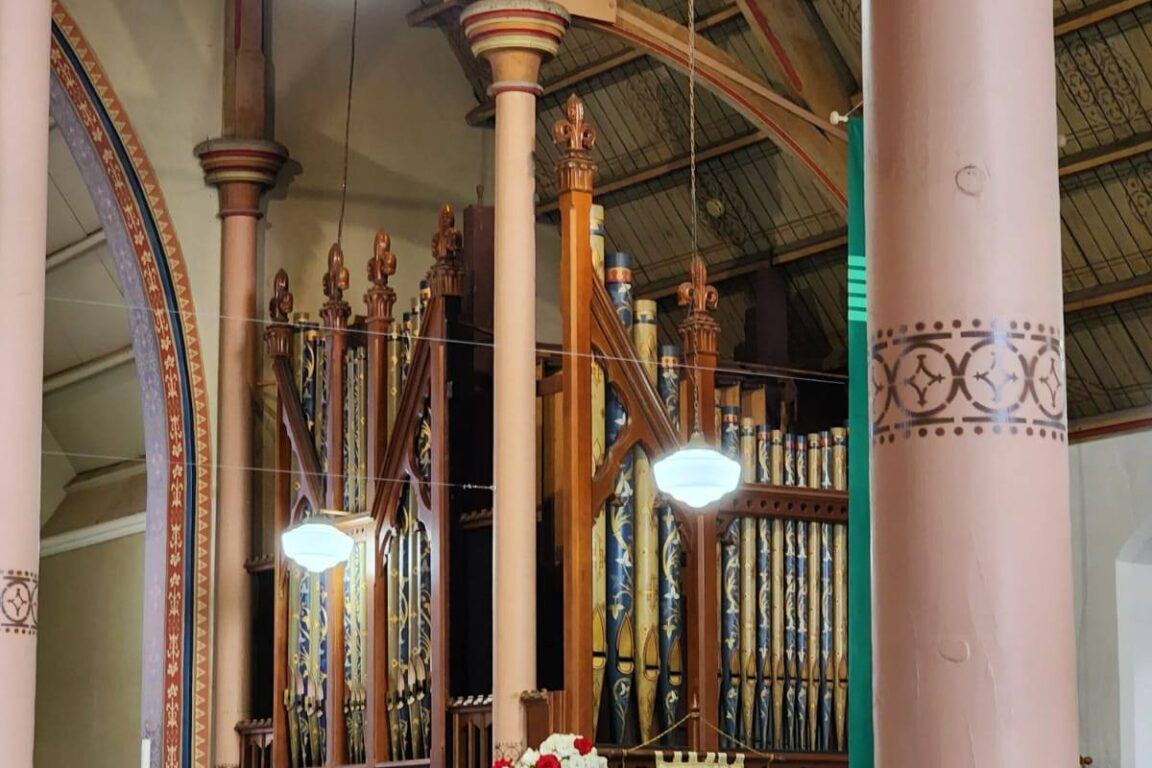Our Venues
Ballaarat Mechanics' Institute
117 Sturt St, Ballarat, 3350
In 1856 an unsuccessful attempt was made to form an Industrial Institute in Ballarat.
By early 1859, following a public meeting, the Ballaarat Mechanics’ Institute was established. Committee meetings and lectures were held in a little cottage in Main Road and thanks to the generosity of the Fire Brigade, a Reading Room was established on the first floor of the Ballarat East Fire Station in Barkly Street. According to Nathan Spielvogel, the reading room contained three tables, 18 chairs, a number of newspapers and 72 books on the shelves.
Through the efforts of Peter Lalor (then an MP) a piece of land in Sturt Street was set aside as the site for the future Mechanics’ Institute. Much argument ensued between the East and West Councils over the future location of a permanent Mechanics’ Institute in Ballarat.
Finally on Friday, September 28, 1860 the foundation stone of the back section of the Ballaarat Mechanics’ Institute was laid with full Masonic honours in front of a crowd, estimated by the Ballarat Star, as numbering 10,000.
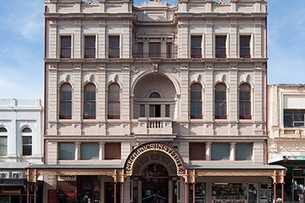
Ballarat Performing Arts Centre
501/503 Neill St, Soldiers Hill, 3350
Ballarat’s performing arts organisations, companies and artists have come together and formed a new association to establish and manage a dedicated performing arts facility at the site of the former Neil St Uniting Church in Soldier’s Hill.
https://bpacballarat.org/
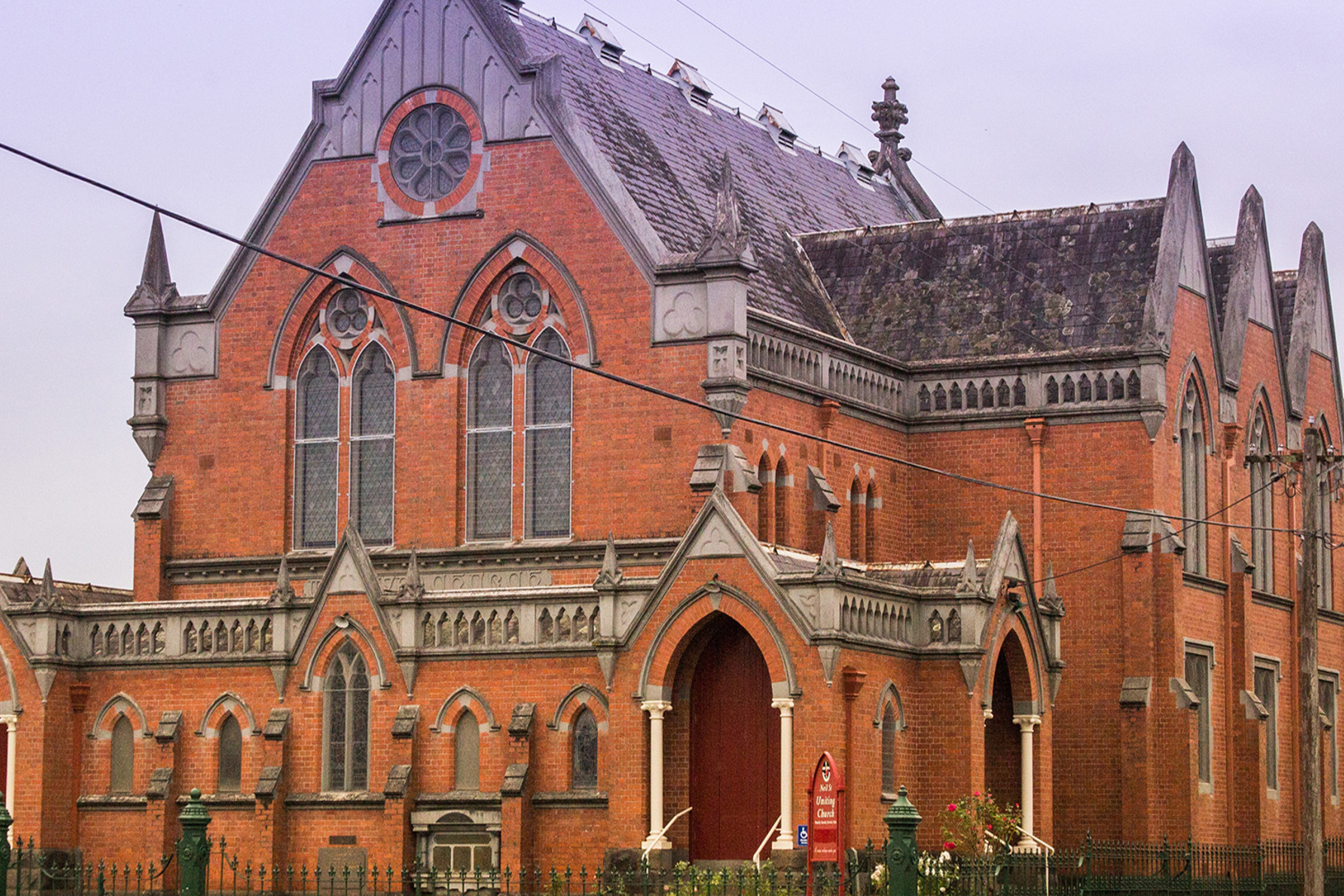
Creswick Town Hall
70 Albert St, Creswick, 3363
Recently renovated, the Creswick Town Hall was built in 1876 and is a testament to the wonderful architecture of the gold rush period.
Get Directions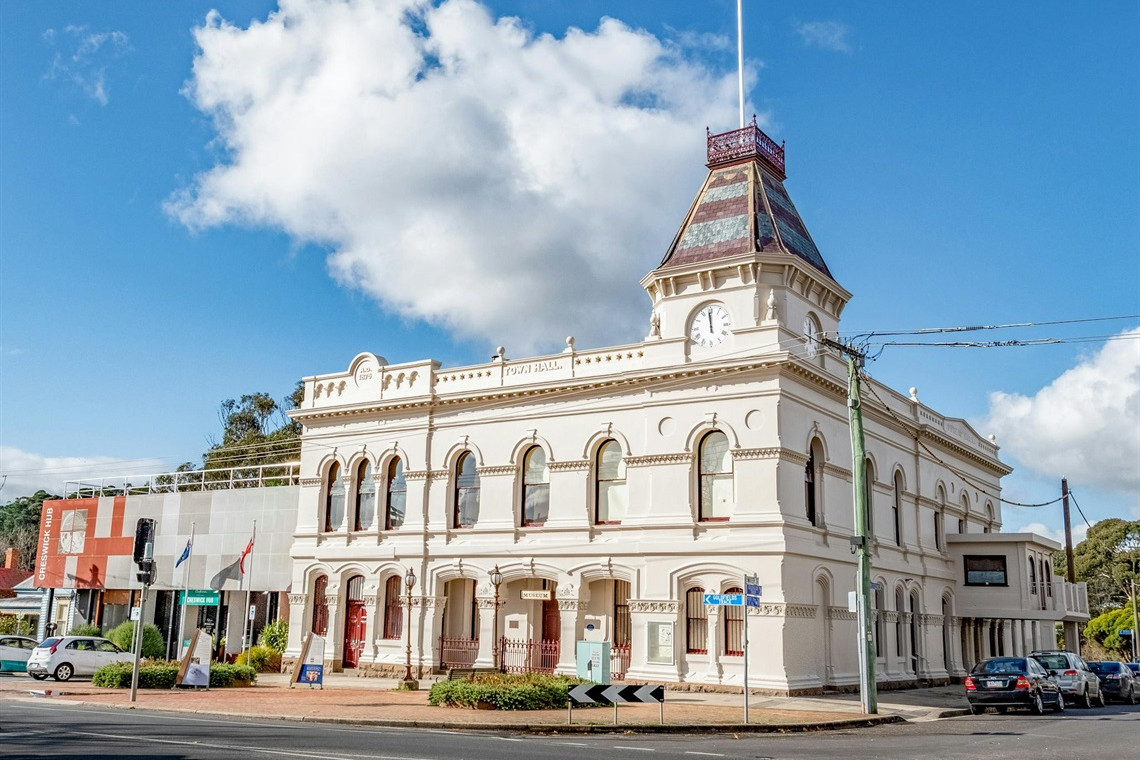
Loreto Chapel, Ballarat
1600 Sturt St, Ballarat, 3350
Loreto College is the oldest school in Ballarat, Victoria. The school has many historical buildings and much heritage that remains present to this day.
Loreto Abbey:
Possibly Australia’s most magnificent convent church, this building was erected between 1898 and 1902 to the design of W.B. Tappin, of the firm of Reed, Smart & Tappin, and is stylistically comparable with the Cathedral of the Sacred Heart, Bendigo, Tappin’s magnum opus. It was substantially funded through the estate of a German countess, Elizabeth Wolff-Metternich, who had resided for some time in Ballarat. The chapel is constructed in Barrabool stone with Oamaru stone detailing and consists of a large and lofty clerestoried nave and a spacious apsidal sanctuary, all surrounded by an external ambulatory. The elaborate plastered and painted interior, recently restored, focuses upon a marble high altar surmounted by three rose windows placed above elaborate Gothic arcading.
At the rear, a huge rose window, with glass by William Montgomery, is framed by the blue stencilled facade pipes of the divided organ built in 1903 by George Fincham & Son at a cost of £675. The instrument remains largely intact apart from the refitting of the console by the same firm in 1938, when stopkeys replaced the original drawstops and the coupling actions were replaced. Restoration work has been carried out by Australian Pipe Organs in recent years.
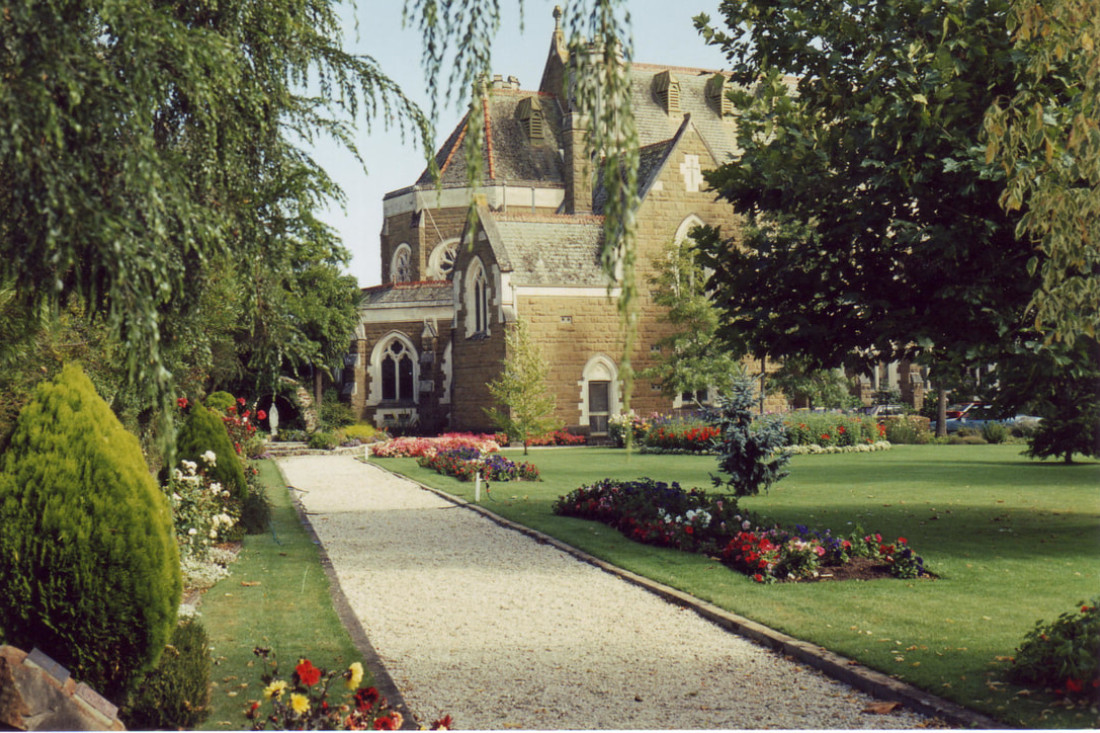
Neill Street Uniting Church, Ballarat
Cnr Neill and Macarthur Streets, Ballarat, 3350
Neill Street Uniting Church is located on the corner of Neill and Macarthur Streets, in the historic precinct of Soldiers Hill, Ballarat. The church held its final Service on Sunday 5th February 2023.
The church at this location is steeped in heritage with the first building erected in 1861, quickly followed by the construction of a more substantial church in 1867.
The present three-manual organ was built by Fincham & Hobday at a cost of £1,145 and was opened by G.B. Fentum on 24 October 1890. This was one of the firm’s largest church organs of the period, incorporating a detached drawstop console, tubular-pneumatic action, and a 16ft case. The instrument was rebuilt in 1924 and again in 1954 by George Fincham & Sons Pty Ltd, at which time the action was converted to electro-pneumatic and a new three manual stopkey console installed. The original tonal scheme and pipework remain largely unaltered, however the original decoration of the façade pipes has regrettably been overpainted.
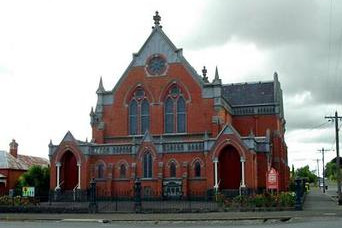
St John's Anglican Church, Creswick
103 Napier St, Creswick, 3363
St John’s Church was built in 1861 in bluestone to the Gothic design of the Ballarat architect H.R. Caselli. The brick chancel and bluestone tower were added later. The lofty interior includes a rear gallery and a small organ recess opening off the chancel, and fine stained glass by William Montgomery, Melbourne, van der Poorten, Brussels and E.R. Suffling, London.
The organ was built for the Wesleyan Church, Barkly Street, Ballarat and opened on 12 April 1889. The casework was designed by Fincham & Hobday and incorporates splayed sides, elaborate carving and a v-shaped central tower, with elaborately decorated façade pipes. With the sale of the Barkly Street church in 2015, the organ was given to St John’s Church by the Uniting Church congregation.
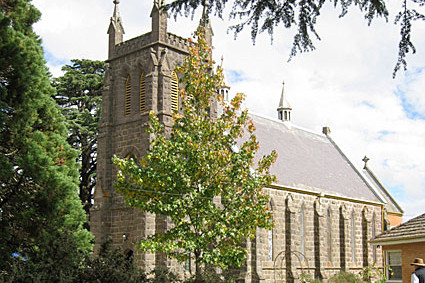
St Patrick’s Cathedral, Ballarat
3 Lyons Street South, Ballarat, 3350
This impressive bluestone building was begun in 1857-1863 to the design of the English architect Charles Hansom and completed in 1870. Consisting of an aisled nave with clerestory, large transepts, spacious chancel and flanking side chapels, the building is distinctive for its Puginesque idiom, this being particularly evident in the proportions, mouldings, elaborate window tracery boarded chancel roof and vaulted south chapel. The cathedral includes a wealth of fittings, including masonry altars and outstanding stained glass by Clayton & Bell, of London, Hardman, of Birmingham, and Mayer, of Munich.The first organ, built by Gray & Davison, of London, and divided on either side of the rear gallery, was opened in March 1867. This impressive instrument had two manuals, 25 speaking stops and a very complete tonal scheme. It was sold to St James’ Church, Dandenong in 1931. The present organ was built in 1930 by George Fincham & Sons and is the most substantial example of the firm’s interwar work to remain intact.
Get Directions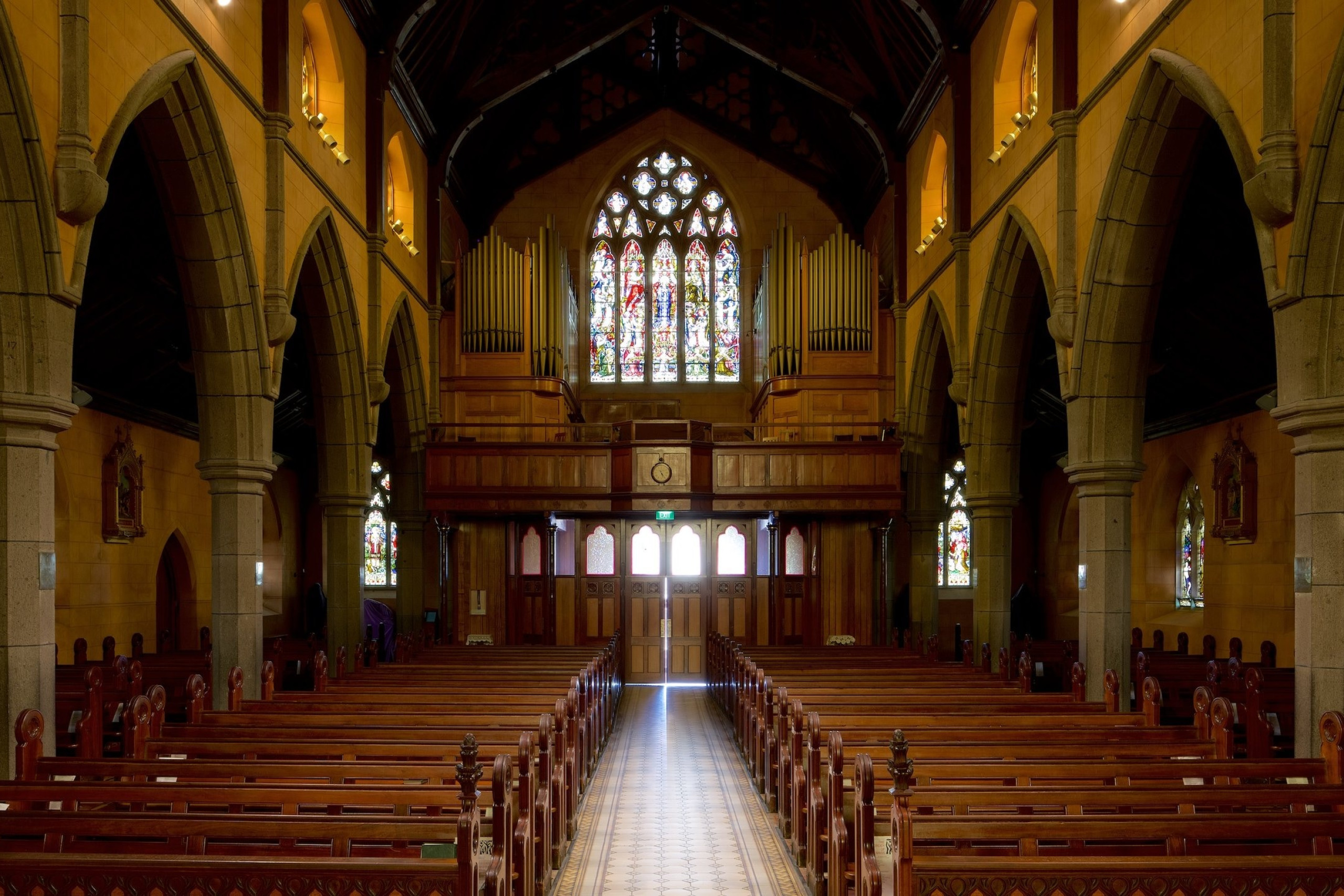
St Paul's Anglican Church, Clunes
Templeton Street, Clunes, 3370
St Paul’s was built in 1870-71, at the height of the gold mining in Clunes. The historic bluestone building is of Gothic style and, in its hill top setting surrounded by mature English trees, resembles a medieval parish church. It is the only known Australian work of architect Thomas Austin who is described as a protégé of the famous English Gothicist, Sir George Gilbert Scott.
The original church, now situated at the rear of St Paul’s, was pre-fabricated in America. It was assembled in Clunes in 1859 of prefabricated board and batten construction with Tudor moulds over doors and windows and is of a design common in North America but rarely seen in Australia. You are welcome to visit this building.
During the mining years, the congregation was very large. Records show that 576 adults and children attended St Paul’s Sunday School picnic in 1877. The church itself holds a large congregation.
The mechanical action pipe organ was built for private use in about 1860 by the little known firm, Hamlin & Son of London. Hamlin had been an employee of Hill & Son. Only one other Hamlin organ has been located and that is in Great Britain. Two were exported to Australia, one for the Collins Street Baptist Church and one, the organ in St Paul’s, Clunes, manufactured under the direction of a Melbourne gentleman for the use of his son, but sadly the son died before the organ arrived in Australia.
This beautiful little organ and beautiful historic church are treasures of our heritage. Both are in need of gentle but urgent, protective restoration.
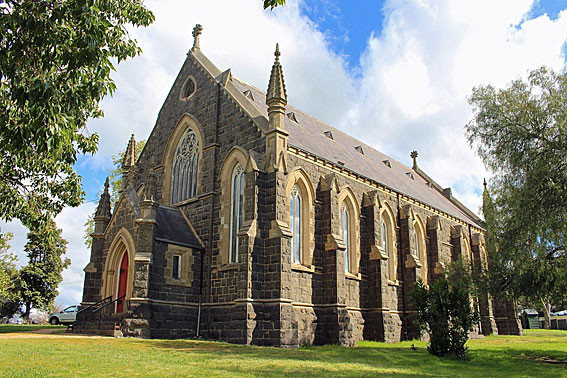
St Paul's, Bakery Hill
5 Humffray St S, Bakery Hill, 3350
The establishment of St Paul’s Church dates to June 1854 when the first resident, Anglican (Church of England) Clergy was appointed to the goldfields and tent services were held on Bakery Hill in the general area where the current church stands. This is also the year of the Eureka Rebellion and the diggers’ march started from this same area.
From a tent church, a schoolhouse/church was built. In 1857 a public meeting was held, and it was decided to build a large church and to make St Paul’s a separate parish from the other areas of Ballarat. The foundation stone was laid in 1858.
However, by 1862 it was decided to rebuild the church to accommodate 800 people. The new building had a tower, a vestry and a gallery was built for the choir.
Disaster struck on the 1st April 1864 when a great thunderstorm hit Ballarat and the ground under the church began to subside. During the following months the church was dismantled and most of the material was saved for rebuilding the church. This was accomplished in 12 months. The tower and the elaborate east window were saved.
The land in front of the church was acquired and a new church still slightly bigger but essentially the same design was built in front of the tower. The new building was opened in 1865. The east window is of interest as it is one of the oldest examples of the Melbourne firm, Ferguson and Urie.
The J.W. Walker & Sons organ has an interesting history. The organ was shipped on the Swiftsure which sailed from London on 8 January 1865. It was delivered to St Paul’s on 10 May 1865. Installation took place over the following weeks, and the opening soiree and concert took place on 23 June 1865. Over the years it has undergone numerous alterations to bring it up to modern standards; it was restored by Ken Turner of Goldfields Pipe Organ and blessed by Bishop Garry on 10 February 2013.
